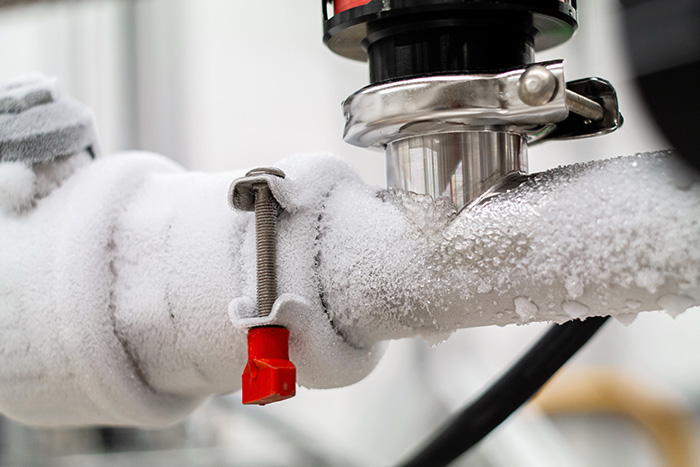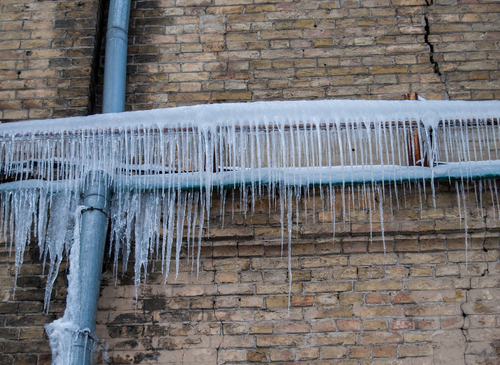Protecting Against Frozen Pipes in Cold Weather: Essential Advice
Protecting Against Frozen Pipes in Cold Weather: Essential Advice
Blog Article
They are making several good observations about How To Avoid Freezing Pipes overall in the content below.

Winter can ruin your plumbing, especially by freezing pipes. Below's how to avoid it from happening and what to do if it does.
Intro
As temperatures drop, the danger of frozen pipes rises, possibly leading to expensive repair work and water damages. Recognizing exactly how to stop icy pipelines is vital for property owners in cold climates.
Comprehending Icy Pipelines
What causes pipes to freeze?
Pipes freeze when subjected to temperature levels listed below 32 ° F (0 ° C) for expanded periods. As water inside the pipes freezes, it expands, taxing the pipeline wall surfaces and possibly creating them to break.
Threats and problems
Frozen pipes can result in supply of water disruptions, residential or commercial property damage, and pricey repair work. Burst pipes can flood homes and create comprehensive architectural damages.
Signs of Frozen Water Lines
Identifying icy pipes early can prevent them from bursting.
Exactly how to determine frozen pipelines
Seek decreased water circulation from taps, uncommon smells or sounds from pipelines, and noticeable frost on revealed pipes.
Prevention Tips
Protecting prone pipes
Wrap pipes in insulation sleeves or utilize warm tape to safeguard them from freezing temperatures. Focus on pipelines in unheated or outside areas of the home.
Heating methods
Keep interior spaces appropriately heated up, especially locations with pipes. Open up closet doors to allow cozy air to flow around pipes under sinks.
Protecting Outdoor Pipes
Garden tubes and outside taps
Disconnect and drain yard hoses prior to wintertime. Mount frost-proof faucets or cover outside faucets with protected caps.
What to Do If Your Pipes Freeze
Immediate activities to take
If you presume frozen pipelines, maintain faucets open to soothe pressure as the ice thaws. Use a hairdryer or towels taken in hot water to thaw pipelines slowly.
Long-Term Solutions
Structural modifications
Consider rerouting pipes away from outside walls or unheated areas. Include extra insulation to attics, cellars, and crawl spaces.
Updating insulation
Buy top notch insulation for pipes, attic rooms, and wall surfaces. Appropriate insulation aids maintain constant temperatures and reduces the danger of icy pipes.
Final thought
Preventing frozen pipelines calls for positive actions and fast reactions. By comprehending the causes, indications, and preventive measures, house owners can protect their pipes throughout cold weather.
5 Ways to Prevent Frozen Pipes
Drain Outdoor Faucets and Disconnect Hoses
First, close the shut-off valve that controls the flow of water in the pipe to your outdoor faucet. Then, head outside to disconnect and drain your hose and open the outdoor faucet to allow the water to completely drain out of the line. Turn off the faucet when done. Finally, head back to the shut-off valve and drain the remaining water inside the pipe into a bucket or container. Additionally, if you have a home irrigation system, you should consider hiring an expert to clear the system of water each year.
Insulate Pipes
One of the best and most cost-effective methods for preventing frozen water pipes is to wrap your pipes with insulation. This is especially important for areas in your home that aren’t exposed to heat, such as an attic. We suggest using foam sleeves, which can typically be found at your local hardware store.
Keep Heat Running at 65
Your pipes are located inside your walls, and the temperature there is much colder than the rest of the house. To prevent your pipes from freezing, The Insurance Information Institute suggests that you keep your home heated to at least 65 degrees, even when traveling. You may want to invest in smart devices that can keep an eye on the temperature in your home while you’re away.
Leave Water Dripping
Moving water — even a small trickle — can prevent ice from forming inside your pipes. When freezing temps are imminent, start a drip of water from all faucets that serve exposed pipes. Leaving a few faucets running will also help relieve pressure inside the pipes and help prevent a rupture if the water inside freezes.
Open Cupboard Doors
Warm your kitchen and bathroom pipes by opening cupboards and vanities. You should also leave your interior doors ajar to help warm air circulate evenly throughout your home.

I hope you enjoyed our topic about How to Prevent Your Pipes From Freezing. Thanks a lot for taking the time to browse our piece of content. Are you aware of another individual who is excited by How to Prevent Your Pipes From Freezing? Be sure promote it. Thanks a lot for taking the time to read it.
Booking Report this page